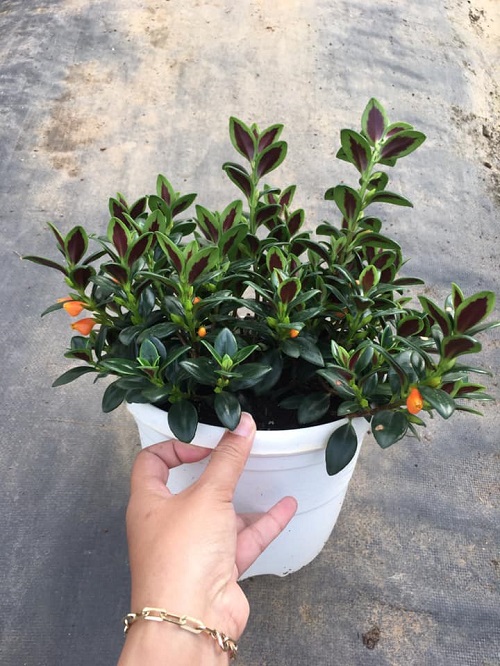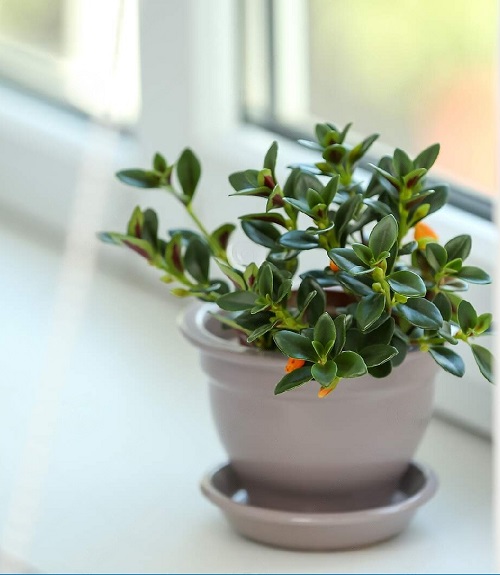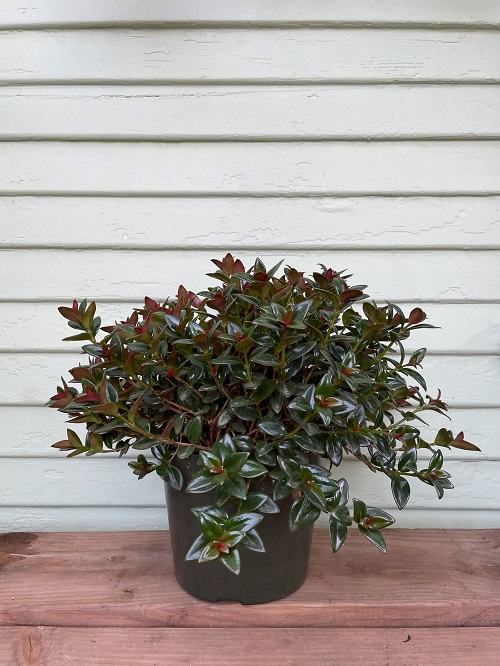Add a splash of tropical elegance to your home with the Black Goldfish Plant. Learn how to care for this unique houseplant with our expert tips.
The Black Goldfish Plant, also known as Nematanthus monanthos, is a unique indoor specimen native to Brazil. It is known for its fish-like flowers resembling goldfish, giving the plant its common name. The flowers are small and orange-red and bloom throughout the year. This plant is easy to care for and is perfect for those new to gardening.
Learn How to Grow Goldfish Plant
Propagating Black Goldfish Plant

The Black Goldfish Plant can be propagated by taking stem cuttings in the spring or summer. Choose a healthy stem with at least 2-3 leaves.
Cut the stem just below a node, the point on the stem where the leaves are attached. Remove the leaves from the bottom half of the cutting and dip the cut end into rooting hormone powder.
Check out this One Secret to Grow Any Plant From a Cutting
Plant the cutting in a well-draining potting mix and keep it in a warm, humid place until roots form. Once the roots have formed, the cutting can be planted and grown as a new plant. Remember that the cutting may not flower for the first year or two as it establishes itself.
The appearance of the Black Goldfish Plant
The Black Goldfish Plant is a small evergreen shrub that grows to about 30 cm in height. The leaves are dark green and glossy. The flowers are small, orange-red, and shaped like a goldfish.
Best Pot Size for Black Goldfish Plant
When it comes to the pot size for the Black Goldfish Plant, a 6-8 inch pot is suitable for a single plant. As it grows, you can move it to a larger pot, but be sure to re-pot during the spring when it is actively growing.
When repotting, avoid overcrowding the roots by selecting a pot slightly larger than the root ball.
Learn about the Plant Pot Sizes, Inches to Gallon
Requirements for Growing Black Goldfish Plant
Location
The best location for a Black Goldfish Plant in a home will be a spot with bright, indirect light. A windowsill that receives filtered sunlight or a room with a north-facing window would be ideal.
Avoid placing it in direct sunlight as it may cause leaf burn or damage to the plant. The plant also prefers warm temperatures, so avoid placing it in a drafty or cold room, as this can cause leaf drop or damage to the plant.
Water
For optimal growth, this plant needs a moderate amount of water. Allow the top 2-4 inches of soil to dry before watering again.
In the winter, water less frequently. Good drainage is important to avoid root rot.
Check out these Signs of Overwatering & How to Save an Overwatered Plant
Soil
It’s important to use a well-draining potting mix. Make sure to use a container with drainage holes to prevent water from sitting in the bottom. A pH between 5.5 and 6.5 is ideal for this plant.
A mix of peat moss, perlite, and vermiculite works well. A small amount of orchid bark can also be added for extra drainage. This mixture will provide the plant with the proper balance of moisture and airflow it needs to thrive.
Here are Container Gardening Tips (Soil) That You Need To Know Now
Humidity
To maintain optimal humidity levels at 40-60 percent for this plant, regularly mist the leaves or place a water tray near the plant. Consider using a humidifier to keep the air around your plant consistently moist. Keep an eye on the plant and adjust the humidity as needed to ensure the best results.
Here are Ways To Increase Humidity For Houseplants That Work
Taking Care of Black Goldfish Plant

Fertilizer
Use a balanced, water-soluble fertilizer every 2-3 weeks during the growing season. Dilute the fertilizer to 1/2-1/4th recommended strength and apply it to the soil while avoiding the leaves.
Check out Effective Homemade Lawn Fertilizers That Are Safe From Hazardous Chemicals
Remember, over-fertilization can lead to leaf burn. It’s important to follow the instructions on the fertilizer package and not exceed the recommended amount.
Alternatively, for more blooms, consider using a fertilizer high in phosphorous, such as a 5-10-5 formula, during the growing season. Additionally, supplementing with a foliar spray of a balanced fertilizer can also promote blooming.
Pests and Diseases
Keep the plant safe from mealybugs and spider mites. They can be treated with a mixture of water and dish soap.
Overwatering can lead to root rot, so it’s important to ensure proper drainage and only water when the top inch of the soil is dry.
Yellowing leaves can be a sign of too much direct sunlight or over-fertilization. Be sure to place the plant in a location with indirect light and follow fertilizer instructions carefully.
Here are DIY Insecticidal Soap Recipes for the Garden to Kill Pests



